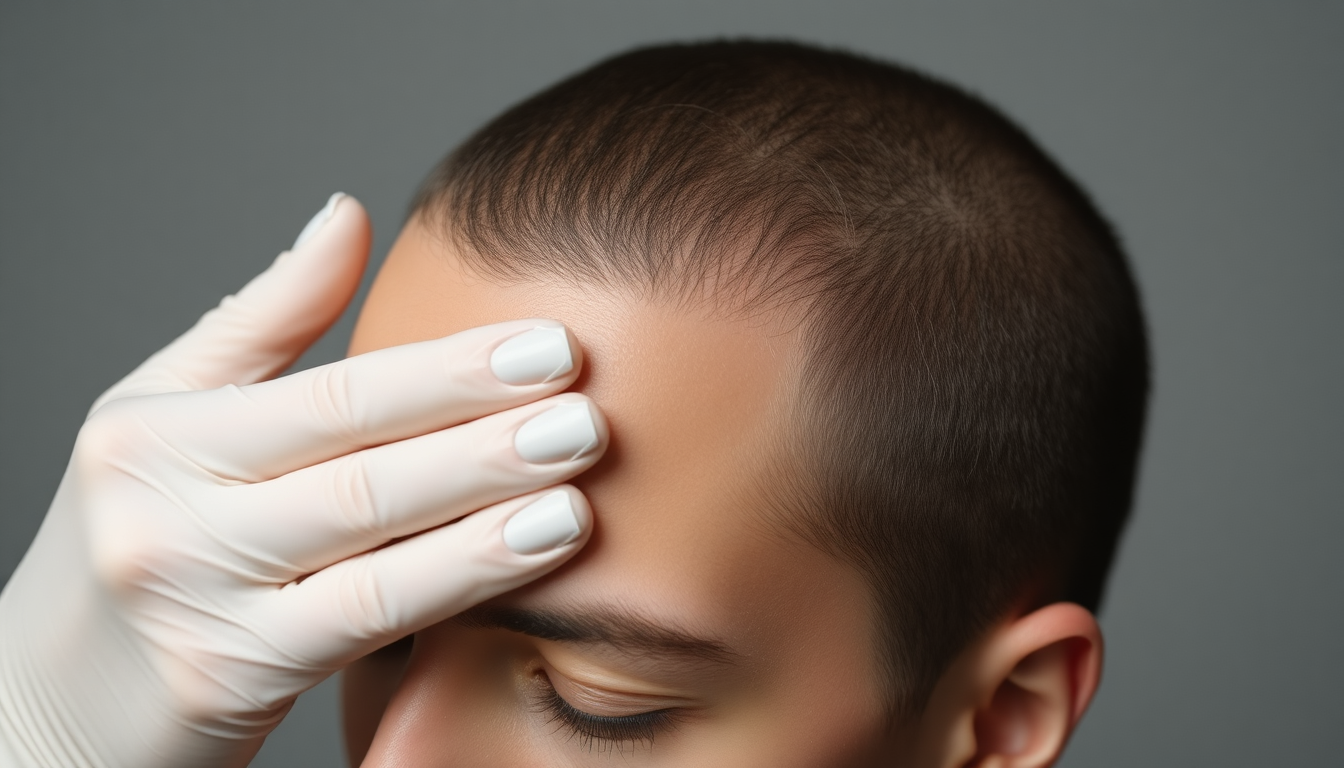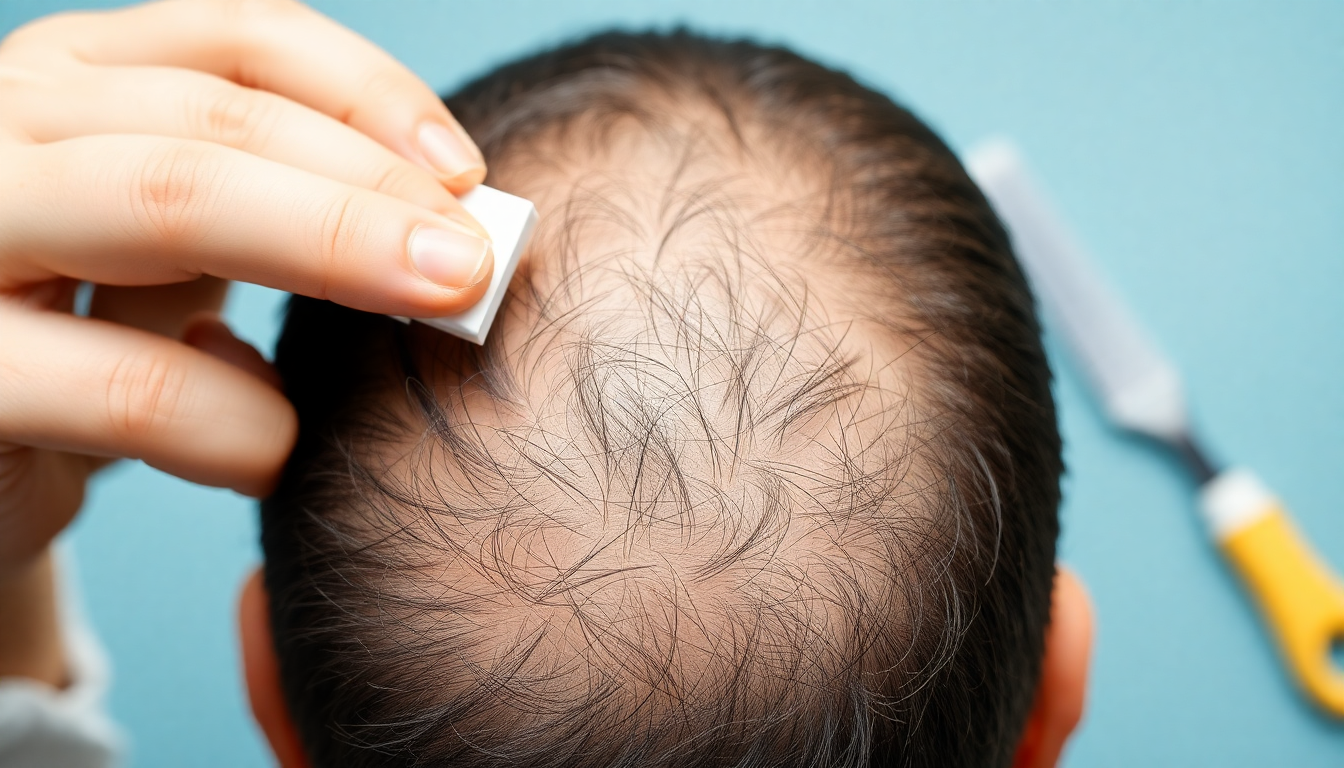Introduction
Building a thoughtful regimen that combines peptide serums, prebiotic scalp treatments and at-home devices is an increasingly popular, multi-modal approach to support scalp health and hair density. Done well, these elements can complement each other — peptides can signal follicle-supportive pathways, prebiotics can promote a balanced scalp microbiome, and devices can enhance circulation and product penetration. Done poorly, combinations can cause irritation, inflammation or inconsistent results.
This guide is designed for beginners who want an evidence-aware, safety-first plan: how to patch-test correctly, introduce products in phases, understand device compatibility, monitor results and choose products — including curated recommendations and sponsored links to trusted formulations from Eelhoe. It also includes practical routines, troubleshooting, and frequently asked questions to help you proceed confidently.
How Hair Growth Works: A Quick Primer
- Hair grows in cycles: anagen (growth), catagen (transition), and telogen (rest). Density and visible thickness depend on the length of the anagen phase and the size of follicular units.
- Many treatments work by supporting follicle health, extending anagen, improving scalp environment, or reducing miniaturization over months.
- Because hair cycles are slow, consistent use and patience (often 3–6 months or more) are required to evaluate meaningful change.
The Science, Simplified: Peptides, Prebiotics and Devices
Understanding the roles of each modality helps with smart pairing.
- Peptide serums: Short chains of amino acids designed to act as signaling molecules. Common scalp peptides include copper peptides (GHK-Cu), various tetrapeptides and pentapeptides. They are typically formulated to be non-irritating and to support collagen/fibroblast activity, wound healing pathways, and potentially follicle health. Evidence is mixed but promising for supportive use.
- Prebiotic scalp treatments: Contain ingredients such as inulin and fructooligosaccharides that selectively feed beneficial microbes, or formulations that help balance sebum and moisture. Prebiotics are distinct from probiotics (live microbes) and are generally gentler and more stable in topical formulations.
-
At-home devices:
- Red / near-infrared LED therapy (low-level light therapy, LLLT): may stimulate cellular energy (mitochondrial) and circulation; typical therapeutic red wavelengths are in the ~630–670 nm range, with some devices using near-infrared ~810–850 nm. Sessions usually last 10–20 minutes per session, several times per week.
- Microneedling / dermarollers: create micro-injuries that may increase topical absorption and stimulate repair signals. At-home devices should be conservative (0.25–0.3 mm), while deeper needling (>0.5 mm) is best done by professionals.
- Scalp massagers and vibrational devices: enhance circulation and can increase comfort and product distribution.
Why Patch-Testing Matters (and How to Do It Right)
Patch-testing isolates reactions so you can identify problematic ingredients before they affect your entire scalp. Follow this thorough protocol.
- Pick the test area: inner forearm or behind the ear are recommended — these areas are discreet and respond similarly to scalp skin for irritation.
- Clean and dry: use a mild soap; don’t apply other products to the area for at least an hour beforehand.
- Apply one product at a time: a pea-sized amount or a drop spread over a 2–3 cm square. Do not mix multiple actives during patch-testing.
- Mark the area: use a gentle skin marker so you can find and inspect the exact spot.
- Observe for 72 hours: check at 1 hour, 24 hours, 48 hours and 72 hours for redness, itching, swelling, blisters, or unusual discomfort.
- Document everything: take photos and notes on symptoms and timing. Mild tingling may be normal for actives; intense burning, spreading redness or blistering means stop and consult a dermatologist.
- Repeat for each new product: test each peptide serum, prebiotic, or potent topical individually before combining.
Phased Pairing: A 12-Week Beginner-Friendly Roadmap
This extended plan reduces risk and helps you clearly assess what works. Make adjustments for sensitivity and for concurrent prescription treatments.
Week 0 — Preparation and Baseline
- Take baseline photos from multiple angles in consistent lighting. Consider a simple hair count in a 1-inch circle if you want objective tracking.
- Stop any new products two weeks before starting to reduce confounding reactions (unless a prescription requires continued use).
- Perform patch tests for each new product as described above.
Weeks 1–3 — Introduce Your Prebiotic Scalp Treatment
- Start with 2x/week applications. Monitor for flares of dandruff, irritation or itch.
- If well tolerated after 2 weeks, increase to 3–4x/week or as directed.
- Use gentle shampooing and avoid heavy silicones that can occlude the scalp if you plan to use devices later.
Weeks 4–6 — Add a Peptide Serum (Slowly)
- Begin with 2 nights/week and apply to dry scalp after cleansing. Increase frequency every 7–10 days if no irritation.
- On nights you use peptide serums, avoid aggressive exfoliants or alcohol-heavy tonics.
Weeks 7–9 — Introduce Gentle Device Use
- LED: start with 10-minute sessions 1–2x/week. Evaluate scalp comfort for 7–10 days before increasing to 3x/week.
- Microneedling (if desired): only use 0.25–0.3 mm at home, once every 10–14 days; avoid using a fresh potent active the same day. Use a sterile device, disinfect before and after.
- Scalp massage: incorporate 2–3x/week post-product application to enhance distribution.
Weeks 10–12 — Evaluate and Adjust
- Compare photos and notes to baseline. Look for improvements in scalp comfort, reduced shedding, or increased hair fullness; remember, visible density changes may take longer than 12 weeks.
- If tolerated, increase LED frequency to manufacturer guidance and maintain microneedling schedule or adjust as needed.
- If irritation appears at any point, pause new introductions and simplify to previously tolerated products.
Device-Specific Guidelines & Compatibility Checklist
-
LED devices:
- Typical therapeutic wavelengths: red ~630–670 nm and near-infrared ~810–850 nm.
- Session durations vary by device; always follow manufacturer guidance and begin conservatively (e.g., 10 minutes/session).
- LED is low risk to pair with serums; consider applying peptide serums after LED to avoid heat-induced evaporation.
-
Microneedling:
- At-home depths: 0.25–0.3 mm for enhanced topical absorption with minimal risk.
- Professional depths (>0.5 mm) should be performed by licensed clinicians due to infection and scarring risk.
- Do not apply fragranced, alcohol-heavy, or highly exfoliating products immediately after needling. Use a sterile, soothing serum or simple moisturizer and wait 24–48 hours to resume actives.
-
Scalp massagers:
- Useful for increasing blood flow and product distribution; low risk. Keep devices clean and avoid abrasive motions on inflamed skin.
-
Hygiene & maintenance:
- Disinfect microneedles with isopropyl alcohol 70% before and after use and allow to air dry. Replace disposable heads as recommended.
- For LED helmets/brushes, wipe contact surfaces with manufacturer-approved wipes and store in a clean, dry place.
Ingredient Interactions and Pairing Rules
Some ingredients are synergistic while others increase irritation risk when combined. Here are practical pairing rules:
- Safe pairings: peptides with prebiotics, peptides with LED, prebiotics with scalp massage, peptides with gentle moisturizing ingredients.
- Use caution: combining microneedling with potent exfoliants (AHAs, BHAs) or alcohol-heavy tonics can lead to irritation and should be avoided for 24–72 hours post-needling.
- Prescription meds: if you use topical minoxidil, retinoids, or steroids, consult a dermatologist before adding devices or new active topicals to avoid interactions or compounded irritation.
- Fragrance and essential oils: can provoke allergic reactions for some people and complicate patch-test interpretation — consider fragrance-free products for initial pairing phases.
How to Monitor Progress: Practical Metrics
Objective tracking helps you know whether a regimen is working or just feeling like progress. Use multiple simple measures:
- Consistent photos: same lighting, angle and hair condition (wet/dry) monthly.
- 1-inch hair circle count: gross count of hairs falling into a fixed circle to track shedding reduction or density changes.
- Pull test (optional): gently tug 40–60 hairs; losing <3–6 hairs is often normal. If you lose more, pause new products and consult a professional.
- Scalp comfort diary: note itching, redness, flaking, product frequency and device use to correlate symptoms with interventions.
Sample Daily Routines for Different Goals
Below are adaptable templates. Modify for sensitivities, lifestyle and clinician guidance.
Beginner — Gentle, Low-Risk Routine
- Morning: gentle shampoo or rinse if needed → apply prebiotic leave-on (2–3x/week) → light scalp massage for 2–4 minutes.
- Evening: cleanse → apply peptide serum to dry scalp (start 2x/week, increase slowly) → sleep.
- Devices: LED 2x/week on non-serum nights at first.
Intermediate — Building Consistency
- Morning: scalp massage with prebiotic treatment → style as usual.
- Evening: cleanse → peptide serum nightly if tolerated → LED 3x/week (can be same day or different days depending on product guidance).
- Microneedling: 0.25–0.3 mm every 10–14 days with a soothing serum afterward.
Advanced — Targeted Approach (Experience Required)
- Combine LED sessions, periodic microneedling (possibly in-clinic for deeper needling), and a curated peptide + prebiotic regimen. Maintain rest days and rotate stronger actives to minimize chronic irritation.
- Closely monitor scalp condition and consult a dermatologist regularly.
Choosing Products: What to Look For
When shopping, prioritize clarity in formulation and manufacturer guidance.
- Peptide serums: look for clearly named peptides (e.g., GHK-Cu, acetyl tetrapeptide), supportive humectants (glycerin, hyaluronic acid) and minimal irritants. Favor fragrance-free if you have sensitive skin.
- Prebiotic scalp treatments: check for prebiotic ingredients like inulin or fructooligosaccharides, calming botanical extracts, and non-comedogenic carriers. Transparency in concentration and claims is a plus.
- Devices: read wavelength and power specifications for LEDs, user reviews, safety certifications (CE, FDA clearance if applicable), and manufacturer customer support.
- Packaging and shelf-stability: peptides can be sensitive to oxidation; pump bottles, airless packaging or opaque tubes can improve stability.
Shopping Recommendations & Sponsored Links
For convenience and formulations designed to work together, consider curated lines from reputable brands. Eelhoe offers peptide serums, prebiotic scalp treatments and hair density kits formulated to integrate with at-home devices. Review their options here: peptide serums for hair, browse their prebiotic scalp treatments, or explore bundled hair density kits for an easier start.
Troubleshooting: Common Issues and Solutions
- Irritation shortly after starting a new serum: stop the new product. Resume the last tolerated regimen and reintroduce the new product after patch testing. Consider fragrance-free formulations.
- Increased flaking or dandruff: could be a reaction to an ingredient or a temporary microbiome adjustment after prebiotic introduction. Pause the newest product and consult a professional if it persists.
- Redness after microneedling: expected short-term erythema should subside in 24–72 hours. If redness is severe, spreading or accompanied by warmth and discharge, seek medical care.
- No visible change after 12 weeks: hair cycles are slow; keep tracking to 6 months. If no benefit after 6–12 months, consult a dermatologist to evaluate underlying causes and prescription options.
When to See a Professional
- If you have rapid or patchy hair loss, consult a dermatologist early — especially for conditions like alopecia areata, scarring alopecia or telogen effluvium with an acute trigger.
- If you are using prescription topicals (minoxidil, topical steroids), get professional guidance before adding microneedling or combining multiple devices.
- If you develop persistent scalp pain, open lesions, or signs of infection after device use, seek immediate medical care.
Expanded FAQs
- Can I use peptides with topical minoxidil? Many people combine peptides with minoxidil; however, because minoxidil can increase absorption, consult a dermatologist and introduce gradually while monitoring for irritation.
- Do prebiotics really change the scalp microbiome? Topical prebiotics can selectively support beneficial microbes and help normalize lipid and moisture balance, but responses vary individually and results are gradual.
- What LED wavelength is best? Both red (630–670 nm) and near-infrared (around 810 nm) have been used in research. Choose devices with clear specs and follow the recommended dosage schedule.
- How long before I see a visible difference? Expect at least 3 months for early changes, often 6 months or longer for measurable density improvements. Track progress quantitatively and with photos.
Glossary: Quick Definitions
- Peptide: Short chain of amino acids used as signaling molecules in topical formulations.
- Prebiotic: Ingredient that feeds beneficial microbes; topical prebiotics help balance the skin or scalp ecosystem.
- LED / LLLT: Low-level light therapy, using specific wavelengths of light to stimulate cellular activity.
- Microneedling: Creating tiny punctures in the skin to stimulate repair pathways and increase topical absorption.
Case Example: How a Beginner Might Progress (Hypothetical)
Clara, a 34-year-old with diffuse thinning, followed a phased plan:
- Weeks 0–2: Patch-tested peptide serum and prebiotic. Baseline photos taken.
- Weeks 3–6: Added prebiotic 3x/week and nightly gentle peptide serum twice weekly. Noted minor tingling at first that subsided.
- Weeks 7–12: Introduced LED 2x/week and increased peptide use to nightly. After 3 months, Clara reported less shedding and fuller appearance in the crown by month 6. She continued monitoring and stayed in touch with her dermatologist.
Final Notes and Next Steps
Combining peptide serums, prebiotic scalp treatments and at-home devices can be an effective, multi-pronged approach to supporting scalp health and improving hair density over time — when done carefully. Prioritize patch-testing, phased introduction and conservative device use. Track progress objectively, and consult a dermatologist for persistent or concerning changes.
If you want to explore well-formulated options that are designed to work together, visit Eelhoe to browse curated peptide serums, targeted prebiotic scalp treatments and all-in-one hair density kits: shop Eelhoe peptide serums, explore prebiotic scalp treatments, or purchase hair density kits. Consider starting with a small routine and follow the phased plan above to identify the best combination for your scalp.
Disclaimer: This article is general informational content and does not replace professional medical advice. If you have a scalp condition, are using prescription treatments, or have medical concerns, consult a licensed dermatologist or healthcare provider before starting new topicals or devices. Individual responses vary.




Laat een reactie achter
Alle reacties worden gemodereerd voordat ze worden gepubliceerd.
Deze site wordt beschermd door hCaptcha en het privacybeleid en de servicevoorwaarden van hCaptcha zijn van toepassing.